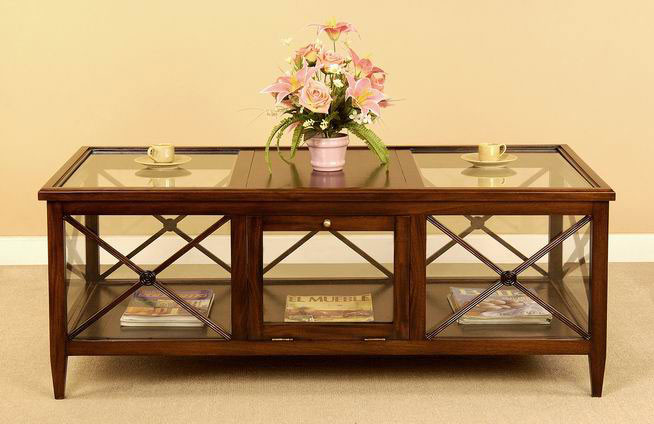- Home
- Learn About Antique Furniture and Reproductions
- Resources
- The Evolution and History of Coffee Tables
The Evolution and History of Coffee Tables

The coffee table has become a staple of furniture around the world. Most homes around the world have some sort of low table in their living room, placed before a sofa or upholstered chairs meant for comfort. It has become a modern-day convenience for support of décor, magazines, beverages, remote controls, books, and other small items. The coffee table that so many of us are familiar with and add to our living rooms did not begin as the centerpiece low table it is today. In fact, it started not with coffee, but with tea.
European interior designers have used the tea table since the 17th century, roughly. Tall, round tables were made to allow for group seating or standing, giving hosts the ability to set up tea service close to guests. The tea table during the 17th century was usually a round top that could be folded down and stored against a wall until tea was served again. During the 18th century, the tea table evolved from a stationary round table to a tea trolly, a more rectangular table on casters that could be wheeled out for tea.
The evolution of coffee tables most likely began with the introduction of coffee to central Europe. This introduction of coffee was considered a historical moment, as countless books and academic papers were dedicated to the popular drink, although only a few details about coffee are certain: the first people believed to have consumed coffee were the Maltese and Venetians, who were then introduced to it via their global trading routes.
Coffee became popular in Europe shortly after this, with Vienna being the point of focus. The first coffee houses in Europe were opened in the Austrian capital to sell this fashionable new beverage.
In Britain during the 17th century, coffee houses began cropping up throughout the entire country, earning a reputation for being a place for the bourgeois and the enlightened to gather. Patrons complained that newly opened coffeehouses had no place for them to set their cup of coffee alongside newspapers or journals, and coffeehouse owners had custom tables built especially for this purpose. Discussions featuring philosophy, politics, and more were often held around the first officially recorded use of tables monikered as a coffee table.
These English coffeehouses were often called Penny Universities, as coffee at that time cost a penny a cup and that polite conversation often led to reasoned and sober debates on matters of the day, science, literature, poetry, commerce, religion—so much so that the name Penny Universities stuck.
These early coffee tables made for the coffeehouses did not resemble the coffee tables we know and recognize today. They were tall, often reaching upwards of 27 inches high. The first coffee tables featured in the homes of the elite across Europe were often adorned with decoration, such as gold vine trims and large claw legs. As coffee began to enter the homes of all social classes and the consumption of the hot beverage became commonplace, the designs of these coffee tables became less ornate and more functional.
One theory in how the coffee tables became lower as time passed is that these less tall designs were inspired by the Ottoman Empire, based on tables often used in tea gardens. However, the Anglo-Japanese style of furniture design was wildly popular in Britain during the 1870s and 1880s. The style of a much lower table was common in Japan, and this seems the most likely source for the concept of lower, longer tables. There was also a revival of certain furniture styles at this time, which is why you can see both lowered tables and Louis XVI or Georgian style coffee tables still popular as well.
In the early 20th century, unlike the more popular wider models of tables we see today, coffee tables during this time were typically very narrow. A business called Imperial Furniture claims to have invented the modern coffee tables as of 1920, by accidentally slicing the legs off a table and the resulting table inspired the President at the time. The 1920s to 1930s saw many Art Deco coffee table designs that were sleek, metallic shapes that were barely wide enough to balance books, let alone a cup of coffee upon it.
It was after the postwar period that coffee tables began to be designed wider as well as larger to become more practical for living spaces, with room to allow collections, knick-knacks, remotes, coffee or beverages, and many other items of everyday use to be placed on the table. Many believe that the invention of the television in the 1950s influenced the shape and size of the table to be further lowered, so as not to obstruct the view of the television if anything were set upon it.
The designs that followed in the 1960s onward featured experimentation in materials such as glass, chromium plating, steel, and even acrylics. Today's coffee tables can even be beautifully detailed Victorian-era antique reproductions, Empire-inspired glass, Pavilion Glass, or blanket chests with drawers.
The evolution of the coffee table is a long, historic reflection on trends of each era, with a return to the more elegance of times gone by as more and more old-world charm is a timeless, classic addition to any home.









